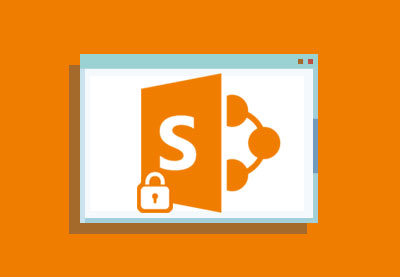This course is the place to learn the administration, best practices and governance of SharePoint 2013 from industry experts. Throughout the class you will install SharePoint, configure service application, setup web application and site collection all while learning from experts that know how to work in the field.
Audience
This course is intended for:
IT Professionals that want to learn how the backed of SharePoint is ran and managed. If you want to know what makes SharePoint tick then this is the class for you. Administrations, Developers and Managers all welcome.
IT Professionals (Administrators, Developers, Managers, etc.)
[row]
[span7]
Duration: 3 Days
Module 1: Introducing SharePoint Server 2013
Identify the capabilities and architecture of SharePoint 2013
Identify new and deprecated features in SharePoint 2013
Identify deployment options for SharePoint 2013
Module 2: Designing an Information Architecture
Identifying Business Requirements
Understanding Business Requirements
Organizing Information in SharePoint 2013
Planning for Discoverable
Identifying Site Columns and Content Types
Designing a Business Taxonomy
Explain how understanding business requirements drives the design of an organizational IA.
Describe the key components available in SharePoint 2013 to deploy
Module 3: Installing and Configuring SharePoint Server 2013
Installing SharePoint Server 2013
Server Farm Installation
Configuring SharePoint Server 2013 Farm Settings
Provisioning a SharePoint 2013 Server Farm
Configuring SharePoint Server 2013 Farm Settings
Configuring Outgoing Email
Configuring Integration with Office Web Apps Server 2013
Configuration of User Profile Service
Configure Search Service Application
Install Workflow Manager
Module 4: Creating Web Applications and Site Collections
Creating Web Applications
Configuring Web Applications
Creating and Configuring Site Collections
Creating Site Collections in New Content Databases
Creating a Warm-up Script
Module 5: Planning and Configuring Service Applications
Introduction to Service Application Architecture
Creating and Configuring Service Applications
Provisioning a Managed Metadata Service Application with Central Administration
Configuring Service Applications for Document Conversions
Configuring Service Application Proxy Groups
Module 6: Managing Users and Permissions
Authorization in SharePoint 2013
Managing Access to Content
Creating a Web Application Policy
Creating and Managing SharePoint Groups
Creating Custom Permission Levels
Managing Permissions and Inheritance
Managing Site Collection Security
Enable anonymous access to a site
Module 7: Managing Taxonomy
Managing Content Types
Understanding Term Stores and Term Sets
Managing Term Stores and Term Sets
Creating Content Types for Propagation
Publishing Content Types Across Site Collections
Configuring the Managed Metadata Service
Creating Term Sets and Terms
Consuming Term Sets
Module 8: Configuring User Profiles
Configuring the User Profile Service Application
Managing User Profiles and Audiences
Creating a User Profile Service Application
Configuring Directory Import
Configuring My Sites
Configuring Audiences
Module 9: Configuring Enterprise Search
Understanding the Search Service Architecture
Configuring Enterprise Search
Managing Enterprise Search
Configuring the Search Service Application
Configuring a File Share Content Source
Configuring a Local SharePoint Content Source
Creating a Search Center
Optimizing Search Results
Customizing the Search Experience
Module 10 – Working with InfoPath Forms in SharePoint 2013
Create a Form Library
Create an InfoPath form and attach it to SharePoint Form Library
Attach a Workflow to the Form Library
Module 11 – Business Intelligence and Dashboards
Task 1: Insert an Excel Web Access Web Part
Task 2: Creating KPIs, Scorecards, Reports, and Dashboard
Task 3: Create a Report using Performance Point
Module 12: Monitoring and Maintaining a SharePoint 2013 Environment
Monitoring a SharePoint 2013 Environment
Tuning and Optimizing a SharePoint Environment
Planning and Configuring Caching
Troubleshooting a SharePoint 2013 Environment
Configuring Usage and Health Data Collection
Configuring SharePoint Diagnostic Logging
Configuring Health Analyzer Rules
Reviewing Usage and Health Data
Investigating Page Load Times
Analyzing SharePoint Page Performance
Module 13 – SharePoint 2010 to SharePoint 2013 Migration
Create the SharePoint 2013 farm
Copy the SharePoint 2010 Products databases
Upgrade SharePoint 2010 Products databases and service applications
Upgrade SharePoint 2010 Products site collections
Upgrade to SharePoint 2013

